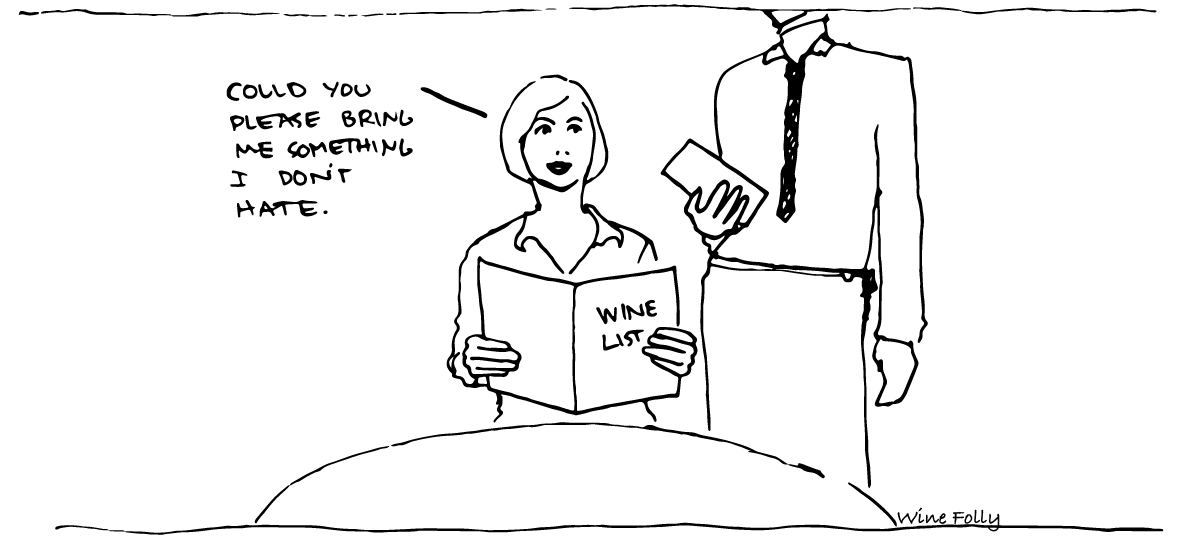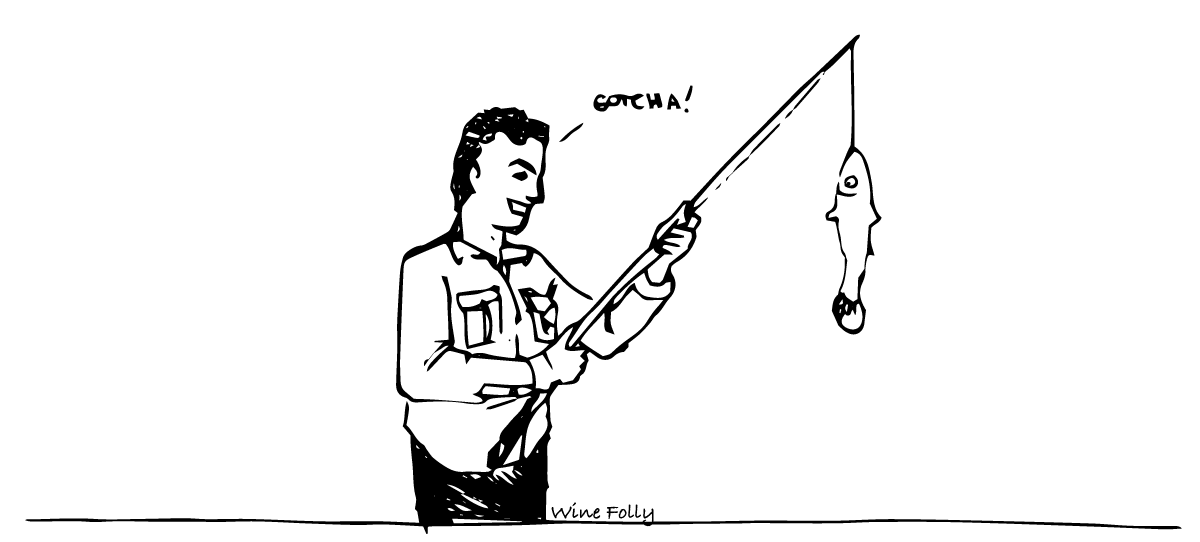
Wine is one of those groceries that, the more you know, the more you know you don’t know. Why is wine so complicated?
If you’re new to wine, imagine it like the English language: it doesn’t make sense, it takes a lifetime to master, and when you use it incorrectly, smart people often shun you. If you’re a seasoned drinker, you’ve no doubt come to realize that this is part of the magic.
1. Too Many Choices

Wine selection has never been more diverse than it is today. As much as this is a bane, it’s also a benefit. Wine is one of the few commercial agricultural products that has not suffered greatly from mono-cropping (although, a few varieties are definitely taking over). Here are a few tips to help you explore if you’re suffering from wine choice overload:
- Start simple. Take the 18 noble grapes challenge
- Expand your horizons based on your taste preferences and wallet
- Once or twice a month, try a new wine from a new region
2. Wines Labels Are Confusing

There are many different ways that wine is labeled, but most are labeled in one of three ways:
- By Variety
- By Region
- By Name

By Variety: This label has the name of the grape variety included on the front label (Zinfandel, Sauvignon Blanc, etc) and because of this, you’ll know pretty much exactly what’s inside. Just so you know, a single-variety wine doesn’t always contain 100% of that variety, most countries allow anywhere from 10–25% of other grapes. This type of labeling is common in the United States, Australia, Chile, Argentina, South Africa, Austria, Greece, Germany and sometimes Portugal.

By Region: This type of label is identifiable because it will be the name of a wine region, which is labeled to indicate where the wine originates. Because of this, you’ll have to know the rules of the region to figure out what grapes are in it. For example, a red wine labeled “Bourgogne” is Pinot Noir. You’ll find regional wine labels are most common in France, Italy, Spain and sometimes Portugal.

By Name: This type of label uses a made-up name unique to the wine. This type of labeling is relatively uncommon and happens in regions with strict regulations (like Tuscany) where the winery makes a wine using non-regulation grapes. This type of labeling is also common in wine blends where the made-up name is part of the storytelling and marketing for the wine. This labeling style is common in the United States, Italy, Australia, Chile and South Africa.
3. There Isn’t a Common Language of Wine

Picture your favorite wine and imagine how it tastes. Now, imagine trying to describe it to a waiter. What words would you use? Do you even know what to say? Even if you’re a regular wine geek, you still might be concerned that your description will be misinterpreted.
The Solution: The answer to communicating what you want lies in understanding what you love. You can do this by learning how to taste wine which will help you identify and characterize the traits of wine that you like.
Also, you can learn some wine terms.
5. Wine Prices are Confusing

The stuff on the bottom shelf is $5 a bottle and the stuff on the top shelf is $45. They are the same grape, same vintage, same country and same-looking bottle. So, what’s the difference?
The Solution: At the moment $10–30 is what you could call the “quality value range” with wine. This is good because is comes out to about $2–6 per glass. Of course, there are a few regions in the world that have such high demand, it’s hard to spend less than $40–50 (e.g. Napa and Burgundy). When you start spending more than $50 for a bottle, wine departs from being “a grocery” and enters the realm of art–a form of art that you can pee out.
6. Wine Snobs Try to Trip You Up

The difference between a wine geek and a wine snob is a wine geek is someone who “geeks out” about wine, like the same way a Star Trek geek would need to know which spaceship (the 1701-D or the 1701) was used in the original series. A wine snob, on the other hand, is someone who uses their wine knowledge to make you feel stupid.
The Solution: Don’t let snobs bait you. Here is a list of funny ways to defeat a wine snob.
7. Your Current Favorite Wine Will Never Be The Same Again

Finally, you find a wine you love! However, when you order more, you swear it tastes different then you remember. Sure enough, looking at the label you realize it’s not the same vintage as your “nummy num-nums” wine. Crap.
The Solution: Wines change vintage-to-vintage depending on the conditions of the particular growing year. Knowing that vintage variation occurs is part of what makes wine an adventure because you are like a treasure hunter always looking for the next great find. It makes you sharp, especially if you’re on a budget. Just so you know, vintage variation tends to be more noticeable in cool climate regions.
Have one to add? Submit them to the comments below!